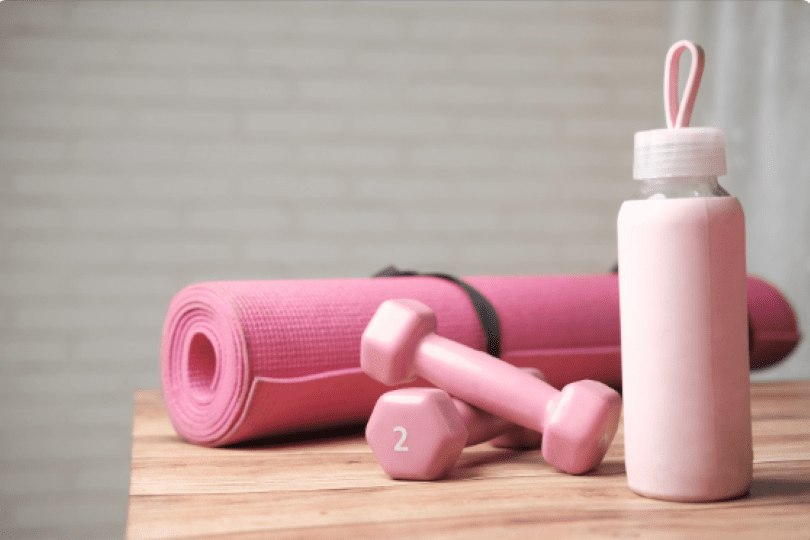Back pain is common among people of all ages, genders, and backgrounds. It can be caused by various factors, including poor posture, injury, stress, and age-related wear and tear. However, regardless of the cause, back pain can significantly impact our daily lives, making it difficult to perform simple tasks or engage in physical activity. Fortunately, several fitness strategies can be effective in providing back pain relief.
Stretching

One of the most effective fitness strategies for back pain relief is stretching. Stretching helps to lengthen tight muscles, improve flexibility, and reduce stiffness, which can help alleviate back pain. The lower back, hips, and thigh muscles are particularly prone to tightness and can contribute to back pain if left untreated. Incorporating stretching exercises into your fitness routine can help prevent and alleviate back pain. Some particularly effective stretches for back pain relief include hamstring stretches, hip flexor stretches, and spinal twists.
Low-impact exercise
Low-impact exercises like swimming, walking, and cycling can also effectively relieve back pain. These low-impact exercises put minimal stress on the joints and are less likely to cause injury or exacerbate existing back pain. These exercises can also help to improve circulation, reduce inflammation, and increase muscle strength and endurance, all of which can help alleviate back pain.
Core strengthening exercises

Strengthening the muscles in your core, which includes your abdominals, back, and pelvis can also be effective in providing back pain relief. These muscles support the spine and keep it stable, which can help reduce back pain. Some effective core-strengthening exercises include planks, bird dogs, and bridges. When performed correctly, these exercises can help improve posture, reduce pressure on the spine, and enhance overall body awareness, contributing to long-term back pain relief. Regular core strengthening exercises can also help prevent future injuries and improve overall physical fitness.
Yoga
Yoga is an excellent fitness strategy for back pain relief. It combines stretching, strength-building, and relaxation techniques to improve flexibility, strengthen muscles, and reduce stress, all of which can help alleviate back pain. Some yoga poses particularly effective for back pain relief include downward dog, cat-cow, and child’s pose. Practicing yoga regularly can help improve posture, reduce muscle tension, and increase blood flow to the affected areas, contributing to long-term back pain relief.
Massage therapy
Massage therapy is another effective fitness strategy for back pain relief. Massage therapy can help improve circulation, reduce muscle tension, and promote relaxation, all of which can help alleviate back pain. Several types of massage therapy can effectively relieve back pain, including deep tissue massage, Swedish massage, and trigger point therapy. Regular massage therapy sessions can help reduce the frequency and severity of back pain, improve the range of motion, and promote overall relaxation and wellness. It is important to consult with a qualified massage therapist to determine the most appropriate massage therapy technique for your specific needs.
Heat therapy
Heat therapy can be an effective way to provide back pain relief. Applying heat to the affected area can help improve circulation, reduce muscle tension, and promote relaxation, all of which can help alleviate back pain. There are several ways to apply heat therapy, including using a heating pad, taking a hot shower or bath, or using a warm towel. It is important to avoid applying heat for extended periods and to never apply heat directly to the skin to prevent burns or further injury.
Physical therapy
Physical therapy can also be an effective fitness strategy for back pain relief. Physical therapy can help improve flexibility, strength, and endurance, all of which can help alleviate back pain. A physical therapist can work with you to develop a personalized treatment plan that includes exercises and stretches tailored to your specific needs.
Conclusion
Back pain can significantly impact our daily lives, making it difficult to perform simple tasks or engage in physical activity. However, incorporating effective fitness strategies such as stretching, low-impact exercise, core-strengthening exercises, yoga, massage therapy, heat therapy, and physical therapy into our routines can alleviate back pain and improve our overall health and wellness. It’s essential to consult with a healthcare professional before starting any fitness routine, especially if you have pre-existing medical conditions or injuries. By working with a healthcare professional, you can develop a personalized fitness plan






